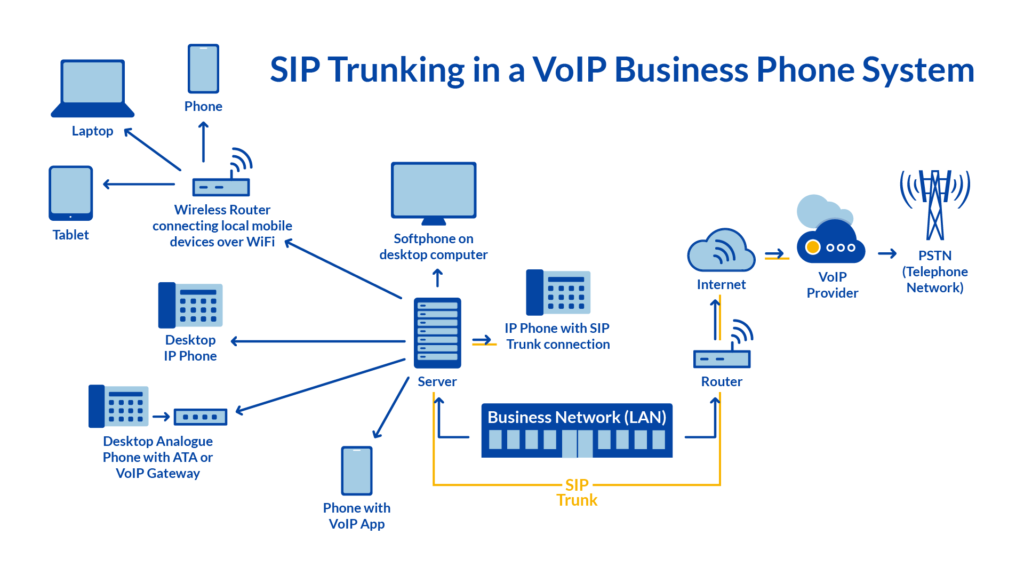
Session Initiation Protocol (SIP) Introduction: Session Initiation Protocol (SIP) trunking is the digitized way of phone calls and other digital communication over an internet connection. The term trunk refers to virtual phone lines that one can use to make phone calls over the internet to anyone with a phone number. Session Initiation Protocol (SIP) trunking is a service offered by a communications service provider that uses the protocol to provision voice over IP (VoIP) connectivity between an on-premises phone system and the public switched telephone network (PSTN). SIP trunking is typically sold as a replacement for digital Primary Rate Interfaces (PRIs), which are based on time-division multiplexing (TDM). Earlier Public Switched Telephone Network (PSTN) were with its Analog lines, ISDN BRI, E1 or t1 lines, are gradually being replaced by IP telephony. An increasing number of businesses are using more modern SIP Trunks.
The PSTN is a circuit-switched network containing copper lines, which requires a physical connection between two points to complete a call. In contrast, each SIP trunk supports multiple SIP channels (a SIP channel being equivalent to one incoming or outgoing call). The number of different channels that a SIP trunk can contain is unlimited, so your business only needs one SIP trunk no matter how many concurrent calls you expect. Required number of channels depends on how many calls your business will make at any one time.
Advantages:
Cost Saving: Using a single network technology supporting both voice and data leads to economies of scale and thus provides cost saving to the organization. The monthly fee to have a number of lines installed at offices will drop significantly, moreover the initial setup cost is also lower compared to the PSTN network. SIP trunking can provide other savings by reducing the cost of long-distance and international calls, toll-free numbers, and additional monthly charges.
High scalability: Virtual phone systems are often very easy to expand. If a business needs additional lines or toll-free numbers, it can contact its SIP trunk provider and upgrade right away without getting new hardware. SIP trunking services easily scale to meet organizational needs, allowing additional trunks and channels with DID to enabled in a matter of minutes, not weeks, like traditional PSTN phone lines.
Consolidated Network Management: The management and monitoring of the PSTN network is no longer needed with SIP trunking, since SIP trunks run over data network. This eliminates the need to maintain and support two different networks.
Unified Communications: SIP trunks are a great way for organizations to unify all of their communication methods, including calls, texts, conferencing, emails and instant messaging. And, as they’re virtual, getting them set up and all channels unified is a quick and efficient process.
Optimized bandwidth usage: With a traditional PSTN access solution based on ISDN, bandwidth is scaled as a multiple of discrete 128Kbps (2 simultaneous calls via BRI/BRA/ISDN2) or 2Mb/s connections (30 simultaneous calls via PRI/PRA/ISDN30). In most cases there is overcapacity. SIP Trunking allows businesses to scale bandwidth in accordance with their actual needs. The number of voice channels supported by a SIP Trunk is based on the expected number of simultaneous calls (SimCall) and can be adjusted on demand.
Local and Toll Free: Companies can get both local and toll free numbers, both pointing to the same SIP trunk, when they use a SIP trunking service. Organizations can even have local numbers where they do business, without having to have a physical office in that local area.
